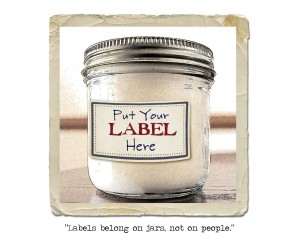
(1/1/16) It wasn’t really all that long ago that kink was considered uber-taboo. Fortunately though, the masses appear to be finally waking up and smelling the 21st century. What was once strictly confined behind tightly sealed doors or within close-knit underground communities has garnered much more sunlight in recent years and even become rather fashionable.
To be sure, kinky lifestyles are nothing new, but there does seem to be a new, more positive trend emerging when it comes to exploring them. With the advent of the interwebs, access to lifestyle information became much easier. Additionally, for those trying to keep their exploration under the radar, the anonymity offered on the net afforded reasonably safe access. The flipside, however, is that it also enabled a lot of misinformation and, in many cases, unnecessary confusion. That said, the upside is that more and more people feel less alone and isolated in discovering and acknowledging their feelings and sexuality.
While there are way too many factors to list involved with how things got from there to here, suffice it to say that various forms of media played a large role. In the 80s and 90s, authors such as Anne Rice, John Warren, Jay Wiseman, Jon Jacobs, Will and Gloria Brame, Philip Miller and Molly Devon were instrumental in capturing a wide range of concepts and making them understandable to the masses while pioneering filmmakers such as Bruce Seven, Ernest Greene and Luc Wylder (who directed the widely acclaimed The Master’s Choice series) helped pave the way with kink-lifestyle portrayals on the screen. As these efforts gained increasing interest, more widespread attention built through such mainstream projects as 9 1/2 weeks, The Story of O, Secretary and Stanley Kubrick’s epic, Eyes Wide Shut among others, culminating with the recent 50 Shades frenzy. Whether reality or fantasy based, as these works expanded imagination and understanding, they inspired a new generation with willingness and confidence to push their own perceived boundaries in safe and fun ways.
Ironically, with all of the wonderful information out there now, the trick today when you think kink is that there’s no singularly universal way to go about it. Even the word itself means something different to different people. Therein lies the beauty–and the challenge. Pushing yourself to find the unique things that really turn you on beyond the common and mundane is a highly personal and intimate experience–and one that’s unique to each person. As long as the activities involved are among consenting adults and reasonable precautions are employed to ensure that no harm occurs, just be yourself and resist any temptation to have to justify yourself. It’s your life and you have every right to seek out experiences that bring you joy and fulfillment in whatever way works best for you. People, being funny animals, tend to prefer putting things (and occasionally, other people, for that matter) into neat little categorized bins, but that’s counterproductive for both creativity and confidence. Forget the labels. They’re generally useful as a common frame of reference in communicating, but beyond that, they belong on jars, not on people.
So, confidently shake off the imagined shackles of Boringville and start heading towards the growing understanding–and acceptance–found on the road to Kinkytown. The time has never been better to Think Kink.
